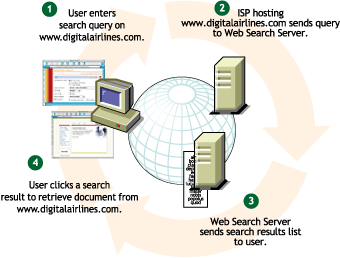Search Service Architecture

Similar in purpose to a software virtual server, a virtual search server is a way to group similar information together for a specific purpose and audience. For example, you might create one virtual search server for your company's support organization, another for it's public Web site, and yet another for your intranet. You might break these down even further by creating more focused virtual search servers for groups within these organizations.
Literally, a virtual search server is a collection of HTML templates and supporting data files and consists of the following components:
Each of these components are managed through the NetWare Web Search Manager, which is accessed using a Web browser (see Creating and Managing Virtual Search Servers).
HINT: If you want two or more virtual search servers to share an index, create a duplicate index on each virtual search server that points to the same index directory. In this manner, all virtual search servers can search a shared index in addition to their own indexes.
The general architecture of a Web search service is depicted in the following diagram.
Figure 5
Search Service Architecture
In Figure 5, the user enters a search query in a search form found on www.digitalairlines.com (1 and 2). When the user clicks the Search button, the query is sent to search.digitalairlines.com, which is hosted by the NetWare Web Search Server (3), which then processes the query using index files that were created using the Web Search Manager.
Web Search then compiles the results of the search into an HTML template, which has been modified to match the look and feel of www.digitalairlines.com, and returns them to the user's Web browser (4).
When users click a search result link to view the content, they are taken to that content, whether it is hosted on www.digitalairlines.com or some other Web site.